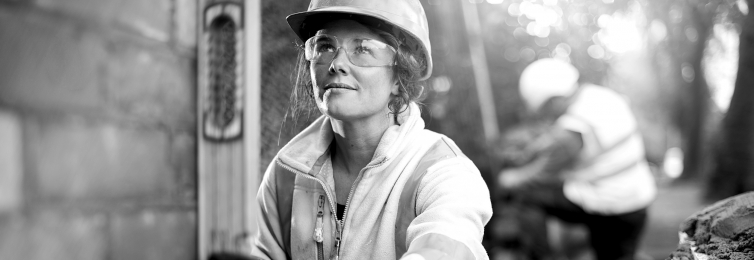Taking safety on the road
Job-site safety involves a wide variety of elements, from fall protection and PPE to trenching and electrical work. Managing the risk associated with this “dirt work” is the focus for most general contractors and construction business owners. But there’s another facet of residential and commercial sites that often takes a backseat to the typical toolbox talk topic: roadwork construction safety. In some instances, road construction is the contractor’s primary work (paving, bridge repair, etc.), but even non-road specific residential GCs and subs may find themselves engaging in projects that require road or lane closures. So, knowing how to stay safe is essential.
Here, David Barker, risk management consultant for Builders Mutual specializing in work zone safety, highlights some roadwork safety measures that should be in every contractor’s toolkit.
High-risk work
According to workzonesafety.org, in 2019 more than two people, on average, were killed per day in work zones, and a traffic crash occurred in a work zone every five minutes. Although those stats are staggering, it makes sense when you consider a roadwork versus dirt work setting. Safety is vital on the job-site, with falls and other incidents putting workers at risk of severe injury or death, but the opportunity for devastating accidents is much higher in road construction. In other words, with vehicles and heavy machinery a constant in work zones, the result of the risk is greater.
On a typical jobsite, the GC can create a good deal of control, regulating and limiting who enters the site. Of course, there will be people walking by when a site is inactive, and those people may or may not come onto the property, putting themselves at risk. In a work zone, the situation involves constant elements outside the control of the workers, as well as greater exposure to those “outsider” risks. Vehicles are constantly driving through, and it is impossible to regulate those drivers. Some will be observant, but all too often, drivers will be texting, speeding, or simply not paying attention.
Outside-in safety
When it comes to managing the risks in a work zone, assess the situation starting with the outside and work your way in. Here are the four safety “zones” to protect roadwork employees (and drivers).
SIGNAGE
The road signage on a project is the first thing the public will see when approaching a work zone, and it’s the best place to start in risk management. For this crucial element to be effective, signage must be used at the right distances and repetition to sufficiently warn drivers. Chances are good that drivers won’t register initial signage, but they serve as a critical early warning to slow down or acknowledge lane shifts. Additional signage and tapering cones will quickly get their attention. Note that using too many signs, especially when they’re left out when the work zone is inactive, can cause drivers to ignore warnings. For example, if someone sees signage driving through an inactive work zone on a Sunday (with no workers), they may mistakenly think the same thing Monday morning when work is active, leading to potential disaster. Because the Department of Transportation in each state may dictate different sign requirements, be sure to know the regulations specific to your state.
TAPER
With any lane shift or closure, there must be sufficient taper to the work using cones. The taper distance allows for vehicles to move away from the work zone well before nearing road workers or equipment. The Manual on Uniform Traffic Control Devices, or MUTCD, is a compilation of national standards for all traffic control devices, including road markings, signs, and traffic signals. This document provides the national standards and recommendations. But, as with signage, it’s important to check with your state, as regulations will vary for taper from state to state. Like OSHA versus localities, state standards for work zones are typically more stringent than those at the federal level.
FLAGGER
Flaggers are essential to work zones, ensuring drivers stop or slow down to maintain the safety of the roadwork. Workers performing flagging duties are very vulnerable, as they typically are facing oncoming traffic. Like taper regulations, the MUTCD denotes the proper requirements for flaggers, from high-visibility apparel and hand gestures to station equipment. State-level rules and best practices will, however, will vary. Here is a link to state-by-state flagger regulations. Free training resources are available at workzonesafety.org to help keep flaggers safe in the work zone.
TRAINING
Whether construction is happening on the dirt or on the road, workers must be sufficiently trained to stay safe on the job. Foundational to road work safety is ensuring team members stay inside the work zone. Often workers don’t think about going outside the zone or cones to walk around equipment or material, but it’s incredibly dangerous. Builders Mutual risk management consultants can offer safety training for road construction teams, helping employers set the right expectations for the work zone. Again, workzonesafety.org has a ton of free training resources—check it out here!
With residential and commercial (dirt) job-sites, OSHA representatives visit sites to ensure contractors and employees are following their regulations. Even though OSHA does have safety authority over road work, state DOTs have established the state-specific rules for this setting. So, state-by-state occupational safety and health organizations are called upon to be the safety enforcers. Federal and state regulators aside, it’s always essential for employers to take the lead on safety training and risk management for their work zones.
For more information, please reach out to your risk management consultant.




 Find an
Find an